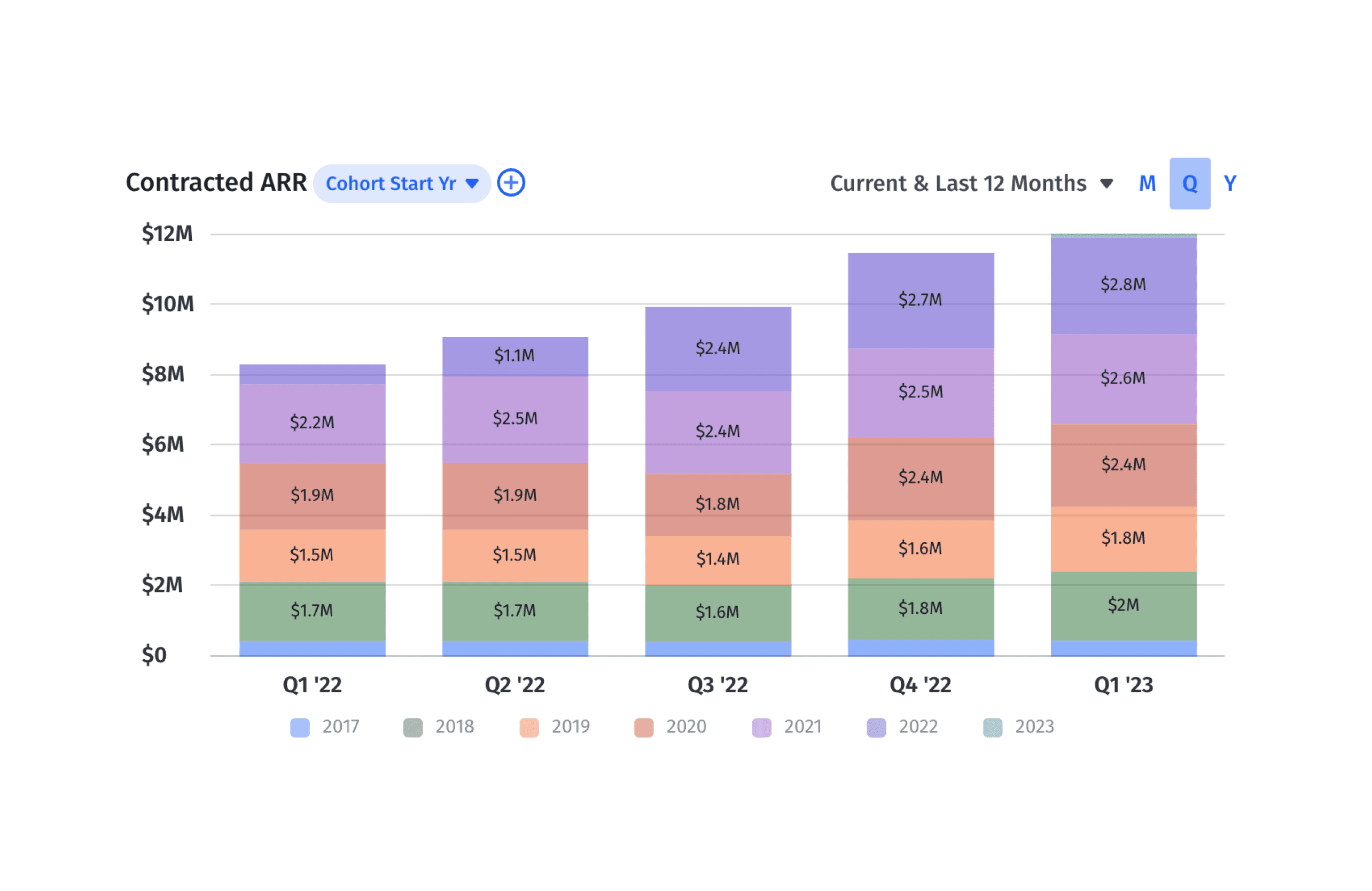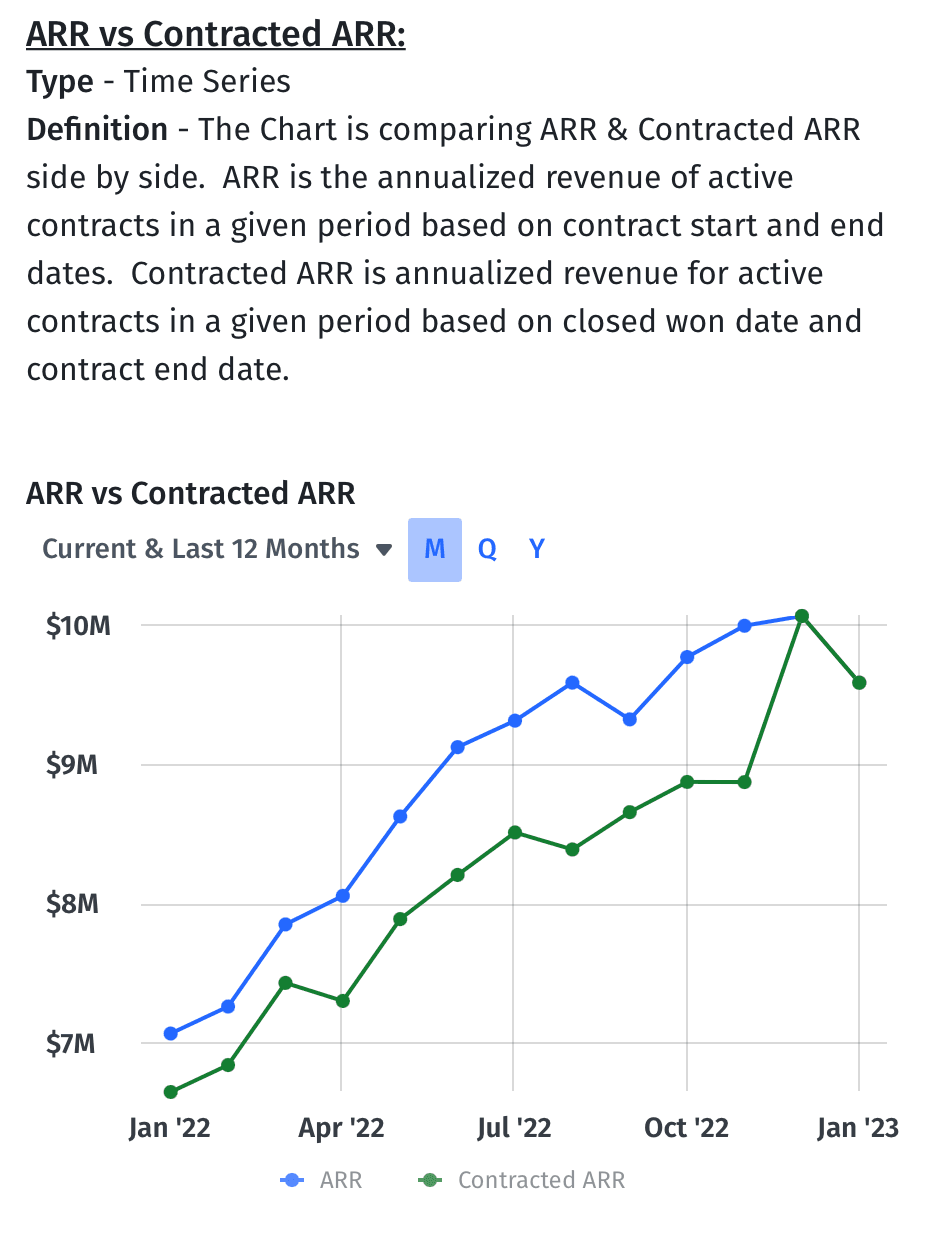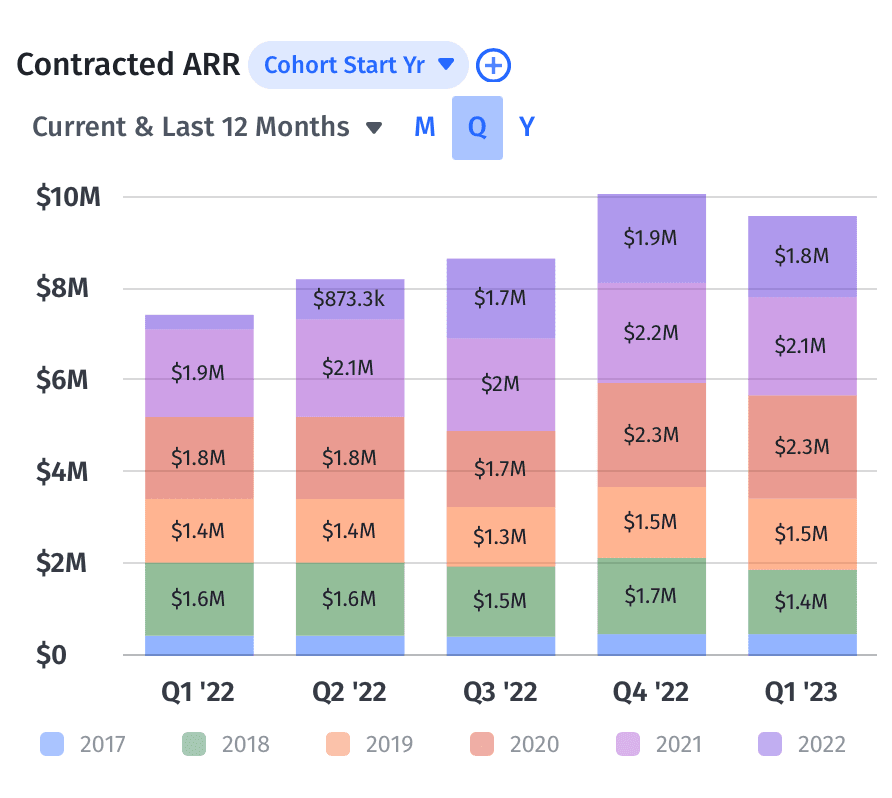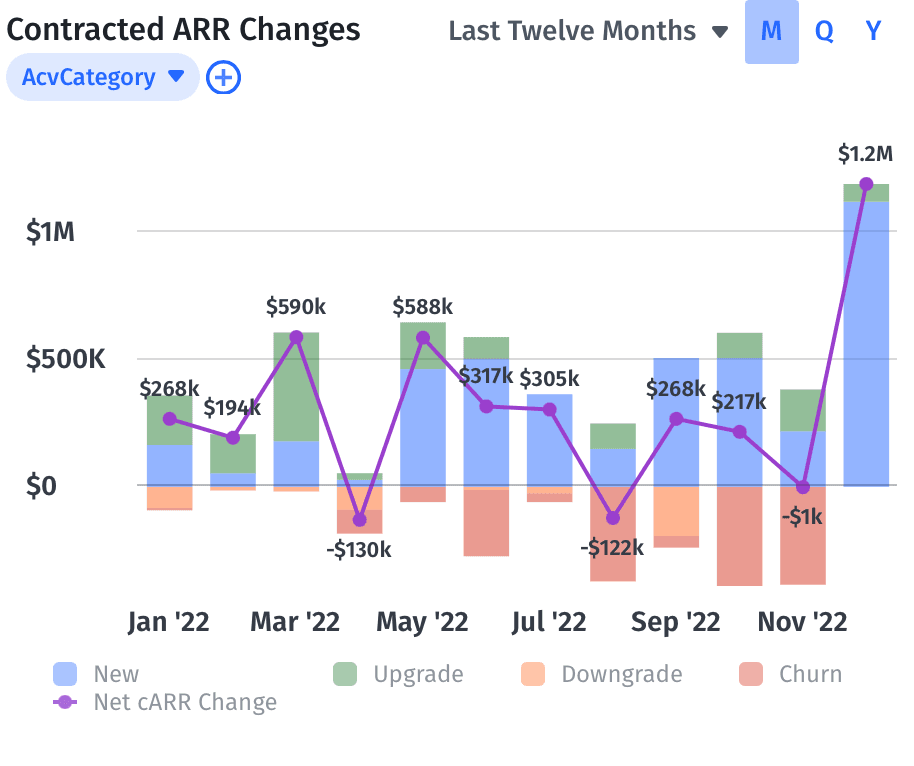CARR vs CMRR: A SaaS Guide to Committed Revenue
What Is Committed Annual Recurring Revenue?
Sometimes referred to as contracted annual recurring revenue, committed annual recurring revenue (CARR) is annualized revenue that accounts for future contracts and churn. Looking at your committed/contracted recurring revenue measures the inflow and outflow of contracts for your SaaS business and helps you optimize your financial forecasting.

Categories
Table of Contents
CARR vs. ARR
CARR in SaaS businesses is different from annual recurring revenue (ARR) because it’s a more detailed look at the total revenue the business can expect.
This is partly due to the period of time new customer onboarding can take. CARR includes annualized revenue for active contracts from the closed-won date through the contract end date, while ARR is the annualized revenue for active contracts based on the contract start and end dates. That means ARR will only include annual recurring revenue once the customer’s year contract actually begins, while CARR includes annual recurring revenue once the contract is closed-won.
CARR gives you information about what revenue you’re contractually guaranteed to receive, whether the contract is live or not. So unlike ARR, CARR in SaaS accounts for known future revenue and churn. As such, it’s a more accurate view of the health of a SaaS business.

How to Calculate CARR
Calculating CARR is a relatively straightforward process using metrics you already track. You’ll start with your existing ARR, add new bookings, then subtract churn. That will give you your CARR.

You can also break the formula out further to include any contracted upsells (which count toward new bookings) and downgrades (which count toward churn). Your ARR remains the primary starting point.

CARR = ARR + New Bookings + New Upsell Bookings – Downgrade Bookings – Churn
What Is Committed Monthly Recurring Revenue (CMRR)?
The monthly version of CARR, CMRR, stands for contracted or committed monthly recurring revenue. CMRR in SaaS combines monthly recurring revenue (MRR) with future known bookings and churn to measure the inflow and outflow of subscriptions or contracts for your SaaS business on a monthly basis.
How to Calculate CMRR
The CMRR calculation is the same as your CARR calculation, except that you begin with your existing MRR, add your new bookings and your new upsell bookings, then subtract your downgrade bookings and your churn.

CMRR = MRR + New Bookings + New Upsell Bookings – Downgrade Bookings – Churn
Why CARR and CMRR Are Crucial Metrics
CARR and CMRR SaaS metrics are important to track because they offer a more nuanced and accurate picture of the company’s overall financial health. ARR and MRR provide a gross overview of the total recurring revenue expected each month or year based on live contracts or subscriptions. But CARR and CMRR factor in anticipated changes, including upgrades, downgrades, and cancellations, as well as deferred revenue for contracts that are not yet live.
CMRR and CARR allow you to dive deeper into the data of when these changes are occurring, which extends the entire vision of the company’s financial standing (as well as what cash inflows/outflows look like for an extended period of time). If your CMRR or CARR differs significantly from your MRR or ARR, it’s time to take a closer look at the “why” behind the numbers.
The board of directors and investors will always want to see ARR and MRR. But when it comes to providing more actionable information, these SaaS financial metrics aren’t enough on their own. CMRR and CARR SaaS metrics allow finance and other business leaders to assess the company’s financial standing and forecast revenue much more accurately. These key metrics ensure you can sense-check your ARR and MRR so you know how financially healthy the company actually is when you plan proactively for the future.
Start Using the ARR Snowball Template
How CARR and CMRR Can Be Used in SaaS
The SaaS business model relies on recurring revenue to keep them going, which means you’ll want an accurate measure of your recurring revenue. Revenue recognition — a generally accepted accounting principle (or GAAP) — comes into play here since revenue shouldn’t be recognized for accounting purposes until a new customer’s contract begins and the product or service is delivered. This is an important distinction for early-stage companies and startups since you may need to track GAAP revenue for accounting. However, tracking CARR or CMRR is significantly more useful for assessing the health and success of the business.
Measuring contracted recurring revenue can help subscription businesses work proactively. Monitoring these metrics gives you a better understanding of your cash inflow and outflow, allowing you to get a clear picture of the company’s financial health. Where ARR and MRR give you a solid idea of how much money is coming in, CARR and CMRR can tell you how much you can actually bank on.
CMRR and CARR SaaS metrics also give you essential information about existing customer retention, helping you collaborate with sales, marketing, and customer success teams so they can adjust their tactics more proactively. Sales and marketing can look at how to adjust the time potential customers move through the sales funnel as it affects customer acquisition cost, while customer success teams can monitor where customers are most likely to make upgrades or downgrade their services. This collaboration allows the business to improve retention and upsells while reducing downgrades and churn.
Perhaps most importantly, the information you get from tracking CARR and CMRR applies to your SaaS revenue forecasting and scenario planning. The information you get about retention, expansion, and churn rate can also help inform your workforce planning, SaaS pricing strategy, and scenario planning around annual contract value (ACV), CAC and customer LTV, and more. In addition to the gross income information ARR and MRR provide, these metrics allow business leaders across departments to proactively refine and improve business practices.
The result? A clearer picture of the company’s financial health, plus the ability to incorporate agile scenario planning for an efficient, productive business moving forward.
When to Use CARR
If the business uses an annual subscription model or contract, you’ll be invoicing annually and watching your ARR. For SaaS companies with annualized revenue, CARR can be especially useful as an exit rate to plan for your book of business moving forward.
When to Use CMRR
If the company’s subscription model or contract is offered on a month-to-month basis, you’ll be invoicing customers monthly. In that case, you’re probably tracking your MRR, so using CMRR will be most useful for the business.
Track Your Committed Revenue with Mosaic
Any SaaS business wants a clear record of its bookings, billings, and revenue to monitor annual recurring revenue growth and the financial status of the business. But just tracking gross revenue isn’t enough. To really understand the financial health of your business, you need to track committed recurring revenue so you have a thorough understanding of the money coming in as well as the money going out. CARR and CMRR SaaS metrics give you this nuanced information, allowing you to see more of the company’s financial story.
As a Strategic Finance Platform, Mosaic allows you to monitor and access these metrics easily, offering at-a-glance access to all the metrics that matter to you. You’ll no longer have to track and compile contracted recurring revenue data in spreadsheets — a time-consuming and inefficient process that often results in inaccurate data. Instead, you can see the data you need in real-time. You can also easily share the latest data to improve cross-department collaboration and drive proactive, strategic decision-making.

Mosaic allows you to chart your ARR right next to your CARR or see your CARR changes broken down into new bookings, upgrades, downgrades, and churn. View the charts by month, quarter, or year to get the detailed financial reporting you need right at your fingertips. Mosaic can help you get the business the insights needed to make the proactive adjustments that have a real impact on future success.

Ready to see how Mosaic can help you monitor your committed recurring revenue? Request a personalized demo today to see how easy it is to track your contracted recurring revenue and get the nuanced revenue data you need to get the full financial picture and move the business forward.
How Strategic Finance Software Can Help CFOs and Finance Teams
Committed Revenue FAQs
What is the difference between CARR and ARR?
The difference between CARR and ARR is that ARR is a total recurring revenue measurement of current, live contracts, while CARR takes into account details like new bookings and churn for contracts that are not live yet. As such, CARR can tell you how much revenue you’re guaranteed based on your contracts, even if they’re not yet live, so you have a clear picture of the company’s financial health.
What is the difference between CMRR and MRR?
Is CARR the same as bookings?
Explore Related Metrics
Own the of your business.



